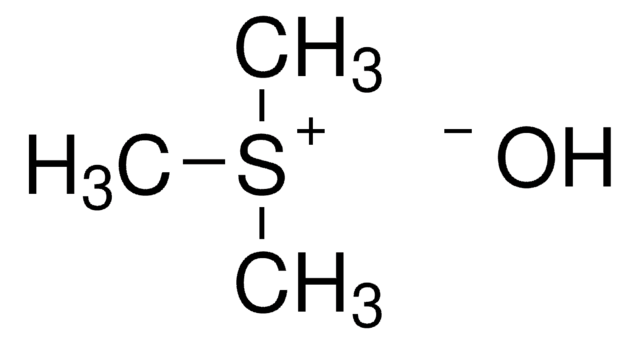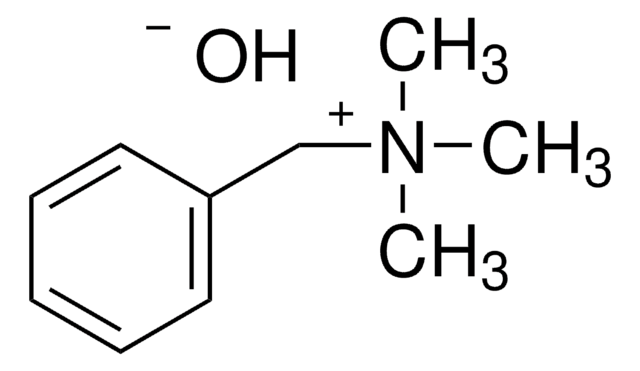79266
Trimethylphenylammonium hydroxide solution
~0.5 M (CH3)3N(OH)C6H5 in methanol, for GC derivatization, LiChropur™
Synonyme(s) :
Phenyltrimethylammonium hydroxide, TMAH
About This Item
Produits recommandés
Qualité
for GC derivatization
LiChropur™
Niveau de qualité
Forme
liquid
Pertinence de la réaction
reagent type: derivatization reagent
reaction type: Esterifications
Concentration
~0.5 M (CH3)3N(OH)C6H5 in methanol
Technique(s)
gas chromatography (GC): suitable
Impuretés
≤0.2% halides (as chloride)
Température de stockage
2-8°C
Chaîne SMILES
[OH-].C[N+](C)(C)c1ccccc1
InChI
1S/C9H14N.H2O/c1-10(2,3)9-7-5-4-6-8-9;/h4-8H,1-3H3;1H2/q+1;/p-1
Clé InChI
HADKRTWCOYPCPH-UHFFFAOYSA-M
Vous recherchez des produits similaires ? Visite Guide de comparaison des produits
Catégories apparentées
Description générale
Application
Autres remarques
Informations légales
Mention d'avertissement
Danger
Mentions de danger
Classification des risques
Acute Tox. 3 Dermal - Acute Tox. 3 Inhalation - Acute Tox. 3 Oral - Eye Dam. 1 - Flam. Liq. 2 - Skin Corr. 1B - STOT SE 1
Organes cibles
Eyes
Code de la classe de stockage
3 - Flammable liquids
Classe de danger pour l'eau (WGK)
WGK 3
Point d'éclair (°F)
51.8 °F - closed cup
Point d'éclair (°C)
11 °C - closed cup
Équipement de protection individuelle
Faceshields, Gloves, Goggles
Faites votre choix parmi les versions les plus récentes :
Déjà en possession de ce produit ?
Retrouvez la documentation relative aux produits que vous avez récemment achetés dans la Bibliothèque de documents.
Les clients ont également consulté
Notre équipe de scientifiques dispose d'une expérience dans tous les secteurs de la recherche, notamment en sciences de la vie, science des matériaux, synthèse chimique, chromatographie, analyse et dans de nombreux autres domaines..
Contacter notre Service technique

















